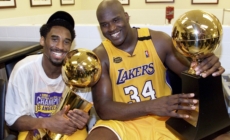-
Trump Administration Lifts Some Food Tariffs in Effort to Ease Prices - 32 mins ago
-
How to Watch Gonzaga vs Arizona State for Free Without YouTube TV: Live Stream NCAA College Basketball, TV Channel - 40 mins ago
-
Ayton Fires Back at Shaq Criticism With Rare Lakers Stat Line - about 1 hour ago
-
Trump Escalates Pressure on Venezuela, but Endgame Is Unclear - about 1 hour ago
-
DHS Shores Up Case Against Mayor Accused of Voting Illegally 3 Times - 2 hours ago
-
Trump Cuts Ties With Marjorie Taylor Greene, Calling Her ‘Wacky’ - 2 hours ago
-
Judge blocks Trump’s $1.2-billion fine on UCLA for alleged antisemitism - 2 hours ago
-
Pat McAfee Reacts to Major YouTube TV-ESPN News for ‘College GameDay’ - 2 hours ago
-
Judge Orders Trump Not to Threaten University of California’s Funding - 3 hours ago
-
Donald Trump Reveals He Had an MRI: What We Know - 3 hours ago
Oura Wants Its Wearables to Revolutionize Pregnancy Studies
Pregnancy is notoriously difficult to study. It’s hard to recruit participants, hard to find a large enough and diverse enough sample size and hard to find the time to conduct such laborious research. It may take nine months to carry a baby to term, but most medical studies last much longer, spanning years and, sometimes, even decades.
Oura, the health technology company known for its smart ring, wants to change the way pregnancy data is collected.
In a first-of-its-kind study, Oura—in partnership with Scripps Research Digital Trials Center—is planning to use the biometric changes of tens of thousands of its members to retrospectively analyze pregnancies that occurred in the past three years. The study aims to advance public understanding of pregnancy-related conditions and to identify potential warning signs of complications.
“The fact that we now have tools, like the Oura ring, that are sitting on your finger 24/7, capturing very rich, very high-resolution, accurate data about your physiology, your behavior, your context—it gives us an opportunity to approach science in a very different way,” Shyamal Patel, Oura’s senior vice president of science, told Newsweek. “We can actually do science in the real world, instead of doing science in this sort of constrained, clinical lab type of setting.”
Dr. Robin Wallace, a medical advisor for family planning at the Planned Parenthood Federation of America, said one of the main advantages of using a retrospective study design is that it allows researchers to pull from very large databases.
“Whenever you can examine a data set that includes more individuals, you’re going to get more information,” Wallace told Newsweek. “That definitely can be a real strength.”

Photo-illustration by Newsweek/Getty
“There are lots of creative and innovative ways to design research, and folks have been employing various methods to do this over the years,” she said. “Any new approach will be helpful and can be enlightening.”
Before researchers can even study pregnancy and post-delivery experiences under a traditional study design, they first have to find participants looking to get pregnant, and then wait for them to actually get pregnant.
“As you can imagine, that’s time consuming,” Patel said. “You’re looking at a study running several years. What we’re doing is completely flipping that model.”
The company estimates that with more than 2.5 million Oura members, thousands have been pregnant while using their ring. All that data is already sitting in Oura’s massive biobank. So, pregnancy researchers can shorten research timelines by simply determining which members wore their rings while pregnant, and then seeking their consent to participate in the study.
Oura is aiming to recruit around 10,000 pregnant members for this study. The company declined to share with Newsweek how many participants have enrolled at this time, but said enrollment would take place over the next several months.
Joining in the study is as simple as logging onto the Oura app. There is a card on the landing page that will bring users to the Scripps’ MyDataHelps platform, where users can access detailed information about the study design, as well as a consent form and questionnaire about pregnancy symptoms and outcomes. Participants can choose to link additional medical records from their pregnancy to the study if they wish to provide such information.
The total time commitment, Patel estimated, would amount to “less than 20 to 30 minutes.”
Researchers plan to use both hard data collected on Oura rings, as well as subjective information from participants to better understand what happens to physiology during pregnancy and how those changes impact sleep, stress and other health markers.
“Any kind of innovative research that looks at maternal health in this country is critically important at this time,” Planned Parenthood’s Wallace said. “We’re facing a sexual and reproductive health crisis in this country.”
Citing the recent federal funding cuts made by the Trump administration, including those at the Centers for Disease Control and Prevention (CDC) and the National Institutes of Health (NIH), Wallace said it was important to find opportunities like the Oura study to understand the maternal health outcomes being recorded in the U.S. (Newsweek reached out to the White House for comment.)
“In medicine, we don’t know what we don’t know,” Wallace said. “What we do know is that our maternal mortality rate in this country is unacceptably high compared to other wealthy nations across the globe. We also know that Black women are disproportionately impacted by this, and we do know that preeclampsia is one of those outcomes that Black women are experiencing at higher rates and cause for outcomes.”
Preeclampsia, which is a serious pregnancy complication involving high blood pressure, is one of the conditions that the Oura study is hoping to learn more about.
Estimated to occur in 5 to 7 percent of all pregnancies, preeclampsia is a leading causes of maternal morbidity. The CDC found the condition to be responsible for over 70,000 maternal deaths and 500,000 fetal deaths worldwide. And in the U.S., rates of preeclampsia are 60 percent higher in Black women than white women.
“We don’t know much about women’s health,” Patel said, “so there’s a lot of opportunity for us to advance the scientific understanding of women’s health, pregnancy, as well as menstrual cycle health, all the way to perimenopause and menopause.”
While traditional research would involve recruiting pregnant individuals who might be at risk of preeclampsia, Oura’s study could allow researchers to narrow down their sample size from all pregnant Oura members to those who developed the condition while pregnant. Researchers could then use that information to study what exactly happens to the body during preeclampsia and adapt those findings to determine how to better prepare women who are at higher risk of the condition for pregnancy.
Up until very recently, researchers did not have these types of tools that enabled them to “track pregnancy in a such a granular manner,” Patel said.
“It’s a great opportunity for us to really shine a light on what is going on during your pregnancy,” he said.
Although technological innovations can be a step in the right direction, Wallace warned that new technology does not always mean greater or equitable access to health care. An Oura ring, for example, starts at $299 and monthly subscriptions for access to the full suite of data costs $5.99, or $69.99 annually.
“We know that to reduce the extreme disparities in maternal health outcomes, we need to both expand access to affordable care and continue to invest in maternal health research,” she said.
Christina Farr, managing director at Manatt and editor-in-chief of the health-tech newsletter “Second Opinion,” told Newsweek that studies like the one Oura has taken on could be a starting point at breaking accessibility barriers.
“We desperately need more research around what happens to the body during pregnancy from a biobehavioral standpoint, and consumers’ wearables may be crucial to that discovery,” Farr said.
She said that with all the promise that many of these products have shown, companies like Oura could establish an argument that wearable technologies are as invaluable as other pregnancy items, like birth pumps and Lamaze classes.
“Assuming the results are significant, what I remain curious about is whether we could see more consumer wearable companies integrated into maternal health care bundles and covered as part of a patients’ insurance—versus largely an out-of-pocket expense,” Farr said.
Despite the accessibility challenges of wearable technologies, Wallace said she welcomes any research led by the private sector, especially amid federal funding cuts.
“Any opportunity for innovation and new ways to support advancing progress in maternal health care is absolutely essential and needed at this time,” Wallace said.
Source link



















